And now, as part of the month long Gothic horror series we launched here, we give you Vincent Price’s career of horror:
Tower of London (1939)
This movie feels like Universal (which had essentially gotten out of the horror business a couple of years earlier) is surreptitiously trying to grope its way back to that lucrative genre with this “historical” epic about Richard III (Basil Rathbone). When we first meet the executioner (a bald, club-footed Boris Karloff) he is sharpening his beheading ax. On the way out of the room he honors a parched prisoner’s request for water by throwing some on him. Many torture devices in the film and some of the same sort of gallows humor with Karloff. Vincent Price plays Richard’s younger brother Clarence, whom we just know is going to get it, on account of his twitchy, cowardly manner. (He is eventually drowned in his favorite wine). The plot is essentially the same as the Shakespeare play: Richard’s various schemes and murders. A great gimmick: he makes his plans and measures his success with a little dollhouse with little figures representing those at court who block his way, almost like voodoo. In the end, he is defeated the honest, wholesome way—in open battle.
The Invisible Man Returns (1940)
Vincent Price in his first proper horror film. Here, he plays a a character who has been framed by Cedric Hardwicke for the murder of his brother. Price is on death row, but then he escapes with the help of the brother of the Claude Rains character from the first film. They’ve risked the madness that comes with invisibility because time was of the essence in freeing him from the executioner. Now the scientist is frantically working on the antidote. Price works to clear his name even as he goes mad. This film is somewhat Pollyannaish. Price never kills anyone (until the end, when he sends Hardwicke over a coal pit, which any self respecting hero would have done), and the movie has a happy ending. Having gotten shot attacking Hardwicke, Price gets a blood transfusion. The blood is the cure—he is visible again. Hardwicke’s death scene is excellent—one of the more plausible ones I’ve seen in movies. Billy Bevan has a small part as a prison guard.
Shock (1946)
This one is truly delicious — a very early demonstration of the full-on Pricean villain, with a screenplay that’s all the more entertaining for relying on sensational coincidence. (It’s clearly one of the many knockoffs of Hitchcock’s Spellbound, released the previous year.) A woman has had a nervous breakdown after witnessing Price killing a woman, although her memories are somewhat vague. She is brought to see a psychiatrist, who turns out to be — you guessed it, Price. When she tells the story in analysis, Price quickly surmises that she could put him in jail and something must be done. In his smoothest, shiftiest tones he prescribes that the woman needs close supervision and privacy at his remote country facility. She is essentially imprisoned there for a time. As her memory begins to come back, Price’s chief nurse, lover and co-conspirator suggests they do her in. When Price caves at the last minute, he and the nurse quarrel, and he strangles her to death. Then, he is pinched by the authorities.
Dragonwyck (1946)
It’s interesting what becomes a classic and what doesn’t. This is rather an amazing movie, and has many of the elements of a classic, but somehow fell through the cracks and became obscure, despite having much in common with similar Gothic successes such as Rebecca (1940) and Jane Eyre (1943). Set in the Hudson Valley in the mid-19th century, it concerns an autocratic Dutch patroon who squeezes every penny out of his tenants without mercy. When his gorgeous cousin (Gene Tierney, with whom Price had appeared in Laura, two years earlier) arrives to be a nanny to his daughter, he hatches new wicked thoughts, poisons his wife, and marries Tierney. (And frankly, who wouldn’t?) But this plan too goes awry, when the newborn son he wanted so badly sickens and dies. Price becomes a dangerously unhinged drug addict. He is in the process of poisoning Tierney when he also goes berserk on his tenant, waving his pistol around until they are forced to shoot him in self-defense.
Abbott and Costello Meet Frankenstein (1948)
This is the first of the duo’s films to match them up with Universal Horror monsters, and as such is a stoke of producing genius, although the word “genius” can’t exactly be applied to the screenplay, direction or performances. The title of the film is a bit of a misnomer. While A & C do indeed meet Frankenstein’s monster (here played by Glenn Strange), they spend just as much time with Dracula (Bela Lugosi) and the Wolfman (Lon Chaney, Jr.). The premise is that the bodies of the former two have been accidentally sent to a wax museum where delivery boys Abbott and Costello encounter them…and encounter them…and encounter them. With some foresight they might have some of this monster power in reserve for future pictures. Nevertheless, the studio and the team had several more monster pictures in them. Price appears at the end of the film in a cameo as the Invisible Man.
House of Wax (1953)
One of my favorite movies of all time. Price at his absolute best, as a demented wax sculptor and museum impresario, maimed in a fire by an unscrupulous partner for the insurance money. A throwback to an earlier age of horror. The script keeps many lines from the original pre-code Mystery of the Wax Museum, but generally improves it, streamlines and clarifies the story. The mise en scene is gorgeous: designed for 3-D and Technicolor, and historically accurate in many details, set in the time of gaslights and hansom cabs (as opposed to the original which was merely an atmospheric “present day”. It has references to some of the places I talk about in my book No Applause such as the Eden Musee etc. Carolyn Jones (Morticia Addams) is in it as Price’s first victim. Phyllis Kirk is the damsel in distress whom the villain obsesses over. Charles Bronson is also in it, thankfully as a mute. The 3-D gimmick is used in many silly ways, but that’s part of its charm.
The Mad Magician (1954)
Another 3-D Price vehicle, this one in black and white. Delicious! Vincent Price as a creator of magician’s stage illusions. He has allowed himself to be cuckolded by his boss, who actually has stolen Price’s wife (Eva Gabor) and refuses to allow him to perform any of the tricks he has devised, depriving him of any glory. Eventually Price snaps, kills the boss, the wife, and the magician who does his tricks. But it gets better! He kills them with his stage devices, which turn out to be not illusions, but practical. One is a buzz saw that shears heads off at the neck. One is a crematorium that burns bodies at a temperature of 3000 degrees F. And it gets still better! Price has also invented make up and masks that allow him to impersonate his victims (the male ones, anyway) so no one knows they’re dead. In the end, he is exposed by a landlady who just happens to be a mystery writer. The plot is set in the gaslit 1890s….
The Fly (1958) and The Return of the Fly (1959)
The former film of course has one of the most terrifying, nightmarish and memorable scenes in all of classic horror: Al “David” Hedison as the miniature man/fly hybrid trapped in a spider’s web, crying in his tiny voice, “Help me! Help me!” In the second film, the son of the fly returns to resume his transporter experiments, with improbably the same accidental results. Price only has a supporting role in both films, as the brother of the original fly/ scientist. Another sequel, Curse of the Fly was released in 1965 but Price did not appear in it.
The House on Haunted Hill (1959)
The first of of Price’s delectable William Castle vehicles, even if its twists and turns are more than a little incoherent. Price, his estranged wife (Carol Ohmart), and a motley collection of characters are locked into Price’s mansion for the night — the guests all there under the pretext that they will each receive $10,000 if they can survive past midnight. Along the way we get ghosts, skeletons, shootings, hangings and some hilariously bad melodrama.
The Tingler (1959)
An unspeakably good William Castle feature. Vincent Price as a scientist and county coroner (how convenient) who has a theory so unscientific it may as well have been hatched by a primitive tribesman. He finds that people who died in frightening circumstances often have cracked spines. He deduces from this observation that there is a creature that lives in people’s vertebrae, and that it grows strong when a person is tense with fear. Such “fear tensions” can only be relieved by screams; when you can’t scream the creature kills you. Castle rigged the seats in the theaters to tingle (a technique he called “Percept-o”), causing random audience members to scream. Great LSD freak-out scene with Price — perhaps the first ever on film!
The Bat (1959)
The last and least major iteration of the old stage warhorse The Bat (see here for background on all the versions) , stars Vincent Price and Agnes Moorehead. You might think this would be a recipe for magic, but unfortunately not. It is the same year as The Tingler and The House on Haunted Hill, and there is a similar William Castle flavor to the low-budget, late black and white proceedings. (Moorehead flubs her lines at several points and it stays in the film). But this version seems much more based on the novel than the play or previous films. It lacks all atmospherics…the requisite dark shadows and cobwebs. It’s worth watching once if you are curious, but expect to be bored.
House of Usher (1960)
The first of Price’s Edgar Allan Poe collaborations with Roger Corman for American International Pictures, this one (like most of them) boasting a script by Richard Matheson. This is probably the most faithful of this popular series to the original source material, but despite that fact it, like all the rest of them, is slow-moving and somewhat soporific. Quite beautiful to look at, atmospheric, even well acted. But the pace is glacial and the adaptation literal. Edgar Allan Poe’s stories are just a few pages long, and leave a lot to the imagination. They weren’t meant to be padded and stretched out and made graphically obvious. In this one Price plays the recluse Roderick Usher who lives in a remote mansion with his sister in a relationship that butts right up against suggestions of incest. The Southern Gothic genre that flourishes to this day would borrow much from this tale. An outsider disturbs the order of the oppressive arrangement; the sister is buried (alive, in turns out) and then it all comes tumbling down.
Master of the World (1961)
Jules Verne essentially rewrote 20,000 Leagues Under the Sea and put it on an airship! Every single line in this screenplay (by Richard Matheson) is absolutely priceless. Sheer heaven. Vincent Price with satanic eyebrows is the demented airship Captain who wants to eliminate war by threatening world governments to blow up their arsenals. Charles Bronson the hero (along with a girl, her father who of course is an arms manufacturer, and Bronson’s rival for the girl). Vito Scotti plays the ship’s humorous cook—with a chef hat! Va bene!
The Pit and the Pendulum (1961)
Another of Corman’s Poe adaptations, which seems to mix the story of The Pit and The Pendulum in with The Fall of the House of Usher and The Premature Burial (which is good, because without these plot elements we would be looking at a black screen, listening to the swish-swish-swish of the pendulum and a man’s thoughts for two hours—which would have been excellent radio. But then perhaps that is the only proper theatrical way to experience Poe–radio). The settings are gorgeous, but the script is leaden, humorless and lacking in either action or poetry. Talk, talk, talk. Gets better toward the end when Price awakens and seeks vengeance as a man possessed.
Tales of Terror (1962)
Price, Peter Lorre, Basil Rathbone and Debra Paget co-star in another AIP film which includes adaptations of Poe‘s “Morella”, “The Black Cat” (merged with “The Cask of Amontillado”) and “The Facts in the Case of M. Valdemar”. The most memorable of the three segments is the middle one, which benefits from Lorre’s comic relief, and the rewarding spectacle of Price bricking his wife and her lover behind a subterranean wall.
Tower of London (1962)
Roger Corman’s version of the Richard III story, this time promoting Price to the bloody role of Richard. The script has little to do with Shakespeare’s version or the earlier one (above) in which Price had a smaller part. Plus, it has ghosts, an idea more derived from Hamlet and MacBeth.
The Comedy of Terrors (1963)
Another AIP all-star film, this time expanding on the comic tone that characterized much of Tales of Terror. In this black comedy Price and Lorre are reunited in roles that would have been oddly well suited for Laurel and Hardy. They are coffin dealers who owe the rent to their landlord (Basil Rathbone), and so they decide to commit some murders so they can sell some caskets. But they bungle their many attempts, right up ’til then end. Boris Karloff is also in the film as the founder of their firm, and Joe E. Brown has a cameo (it turned out to be his last film role).

Twice Told Tales (1963)
One often forgets that Hawthorne as much as Poe specialized in moody, supernatural tales. Here we get three, including Dr. Heidegger’s Experiment, Rappaccini’s Daughter and a truncated adaptation of The House of the Seven Gables. United Artists released the picture but they seem to have taken up the low-key, low-budget modus operandi of AIP. With the difference being that this film is more compelling than the Poe series.
The Haunted Palace (1963)
Another Corman “Poe” picture but in name only. While named after a Poe poem the plot is actually based on the H.P. Lovecraft tale The Case of Charles Dexter Ward. Lon Chaney Jr and Debra Paget co-star.
The Raven (1963)
Another Corman Poe “adaptation”, although this one (also adapted by Mathieson) scarcely has anything to do with Poe’s poem. Vincent Price, Boris Karloff and Peter Lorre play a trio of competing wizards; Lorre has the misfortune to be the one transformed into the titular bird. It sounds much more entertaining than it is.
Diary of a Mad Man (1963)
Based upon a story by de Maupassant, the film tells the tale of a judge (Price) who is haunted by a malevolent and apparently demonic unseen creature called a “horla”. The title refers to the fact that the story is read by authorities in the deceased judge’s journal, and they naturally assume his version of events was the perspective of an insane person. But we, who watch the tale in flashback, know the occurrances are quite true.
Last Man on Earth (1964)
This is the first of three major screen adaptation’s of Richard Matheson’s I Am Legend, the others being The Omega Man (1971) and I Am Legend (2007). Surely you know the story: a man is left virtually alone in the world, the rest of the human race either dead from a global pandemic or converted into flesh-eating vampire-zombies. His life is a daily struggle to fight off these creatures and to seek out other normal human beings. I think this film contains some of Price’s best acting, and he has to carry the picture virtually by himself. It is interesting to watch him play a sympathetic, contemporary hero at this stage — by 1964, he’d been almost exclusively been playing historical villains and weirdos for years. The other interesting aspect is that though it was distributed in America by AIP, it was an Italian production. Italian studios, along with AIP in the U.S. and Hammer in Britain, were three pillars of Gothic horror in the 1960s.
The Masque of the Red Death (1964)
Another Corman adaptation of a horrifying Poe tale, mashed-up with another powerful Poe story Hop Frog, which injects a dramatic revenge element.
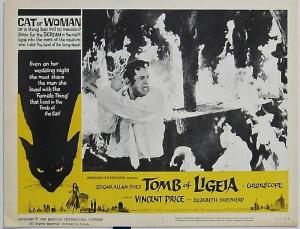
The Tomb of Ligeia (1964)
In this AIP Poe adaptation, Price gets to wear amazingly cool sunglasses. Yet another tale where the hero thinks his dead wife is alive. At the climax, a fight to the death with a black cat (which has blinded Price) while the tomb burns down. A sort of low point—lacks the delicious camp, again substituting tedium. Very little of it is derived from the Poe tale Ligeia
Dr. Goldfoot and the Bikini Machine (1965), and Dr. Goldfoot and the Girl Bombs (1966)
AIP also specialized in you-oriented surf musicals, so it was probably inevitable that they would eventually smash the two genres together. Price is a mad scientist with an assistant named Igor. The premise is that he mass-produces beautiful lady robots with the intention of wreaking havoc. Frankie Avalon is the bumbling spy hero, and Fred Clark his apoplectic uncle/ boss. It was directed by Norman Taurog and it is at once terrible and fascinating and fun to watch. (But terrible, rather painful, really). The sequel, in which the robot girls now explode, was an Italian production, released through AIP.
House of 1,000 Dolls (1967)
Price plays an evil magician who hypnotizes women, kidnaps them and spirits them to his white slaver supermarket “The House of 1,000 Dolls”. Filmed in Tangiers!
The Conqueror Worm a.k.a Witchfinder General (1968)
It’s hilarious that this one was included in the Poe cycle. An English production released by AIP, it’s about a 17th century official (Price) who tortures people into confessing witchcraft. It has absolutely zero to do with the Poe poem, AIP just slapped that name on it when they released the picture in the States. This the last film in that series. Price is directed to be deadly serious in it; its main saving grace from the modern perspective is the large amount of sadistic violence it contains. And Price gets to wear one of his best get-ups ever.
The Oblong Box (1969)
Another British production, this time co-starring Christopher Lee in a Byzantine plot featuring disfigurement, voodoo, premature burial and murder.
Scream and Scream Again (1970)
Price plays a transplantation surgeon. Make of that detail what you will. A tale of conspiracy, mysterious deaths, disappearances and amputations, investigated by head of intelligence Christopher Lee. Peter Cushing has a cameo.
Cry of the Banshee (1970)
Here, Price plays a somewhat more sympathetic Elizabethan witchfinder. Initially we find his Medieval methods of punishment distasteful. But then it emerges that the witches and the demons they conjure are real, with terrifying and tragic results.
The Abominable Dr. Phibes (1971) and Dr. Phibes Rises Again (1972)
Absolute heaven—Price as a demented pipe organist—mute, dead, both? Getting revenge on the nine doctors who botched an operation on his wife, killing her. He kills each according to a different plague from Exodus. He then melts a wax figure of each victim with a blow-torch. The picture features clever toy-like mechanical devices, like a clockwork swing band. All-star cast include Joseph Cotten, Terry-Thomas, and Hugh Griffith. For some wonderful theatrical (but nonsensical) reason, Phibes talks to his dead wife’s portrait by plugging his brain into a Victrola. It looks cool, but why bother? But this film, like all great Gothic horror is all about aesthetics, so it works beautifully. In the delightful sequel, Phibes and his wife emerge from suspended animation and head for Egypt where they intend to partake of the subterranean River of Life. En route, they must of course kill all the members of a rival expedition seeking the same elixir of immortality.
Theatre of Blood (1973)
One of my favorite movies! In Theatre of Blood, Price plays a demented ham who fakes his own death in order to get revenge upon a gaggle of theatre critics who’ve literally driven him mad. One by one, he bumps them off in clever, amusing ways drawn from the great plays of Shakespeare. And each critic is played by a hilarious British character actor (Robert Morley as a big, preening sissy stands out in my memory). And for sex appeal, there’s Diana Rigg as Price’s dutiful, equally insane daughter. This movie is as delicious as a bag of Halloween candy — with no apples.
Mad House (1974)
A wonderfully late entry in the Gothic horror annals—most reassuring, although it’s pretty bad, as well. Vincent Price plays a TV star named Dr. Death, who is coaxed out of retirement, following a long convalescence necessitated by the nervous breakdown that occurred when he killed (?) his wife. Now that he is back, people are dying around him again. Is he doing it? Is he being gaslighted? A typical murder from the film has the director of his movie being crushed in a prop bed. In the end, the true villain seems to be Peter Cushing his colleague, who helped create Dr. Death but has always lived in Price’s shadow. Price seems to burn himself up in a fire. Or has he?
NOW: I am going to end this post here, despite the fact that Price would live and work almost another two decades, with his loving tribute in Tim Burton’s Edward Scissorhands (1990) as a wonderful capper to a brilliant career. There were several more films in between, but I’ve yet to see them, so….a later post will be in order. And we have left out lots of other worthy work: memorable television appearances, his non-horror work in films, and appearances in music videos and records by Alice Cooper and Michael Jackson. But this is, shall we say, the meat of it. I did say this was about “classic horror” and being of a certain age I have a hard time matching the word “classic” to things from the 1980s or after…but I’m working on it.




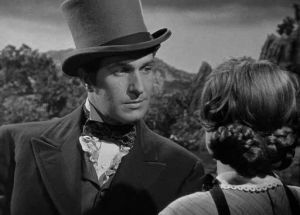
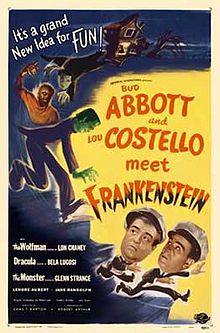
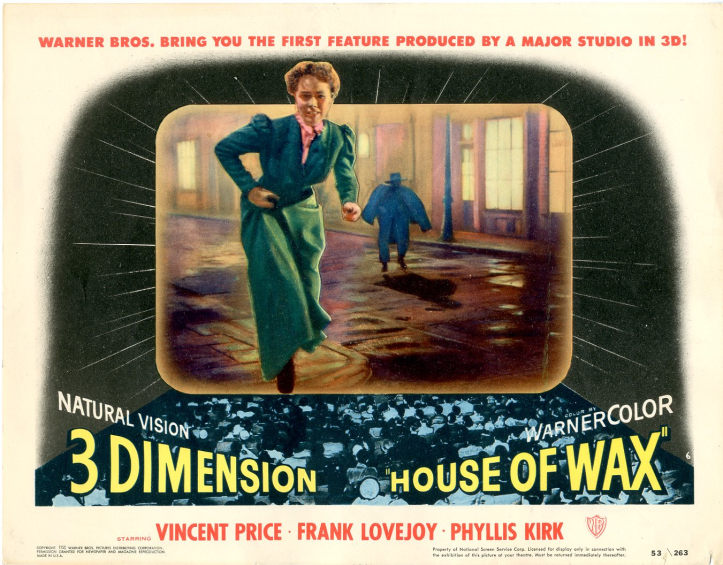

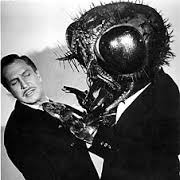


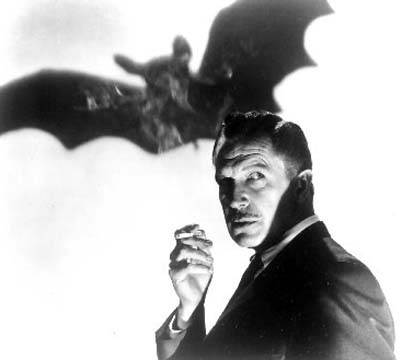



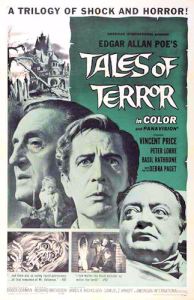







![Goldfootbikinimachine[1]](https://travsd.files.wordpress.com/2013/05/goldfootbikinimachine1.jpg?w=202&h=300)
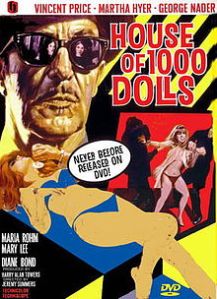


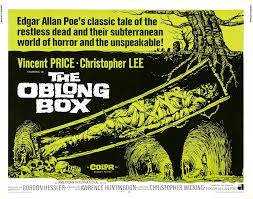
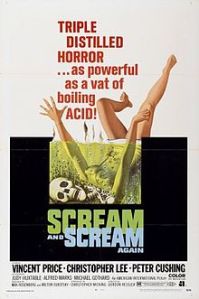

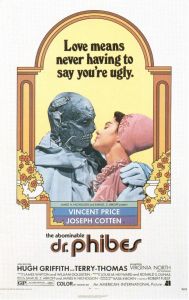


This is rather overwhelmingly fantastic. Love your blog, and now is just the right time for a Vincent Price enthusigasm, if I can coin a term. Promoting your blog at my Tumblr.
LikeLike
Thank you!!!
LikeLiked by 1 person